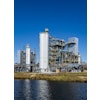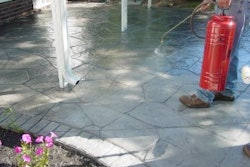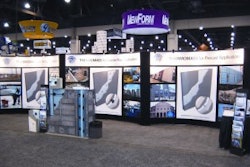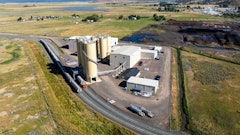OROVILLE -- Everyone knew it was coming.
At least, that was the word Thursday from two state building officials who spoke in Oroville to outline the new mandatory "green" building codes set to become law Jan. 1.
The California Building Standards Commission has been working for more than 18 months to develop green building standards in compliance with the Global Warming Solutions Act of 2006 and a directive from Gov. Arnold Schwarzenegger to complete the codes by 2010.
"Essentially, green building was coming, one way or another," said Walls, executive director of the Building and Standards Commission.
Walls unveiled the 2010 California Green Building Standards Code, referred to simply as Cal Green, and described the process it took to develop the new standards at a seminar attended by 118 local contractors, inspectors, civil engineers, government officials and the general public. The seminar was held at Cleantech Innovations Center in Oroville.
Cal Green requires all new buildings constructed in the state to be more energy efficient and environmentally responsible.
Two significant changes included in the code that address those mandates apply to construction waste and indoor water use.
As explained by California Housing and Community Development official Doug Hensel, contractors will have to divert 50 percent of construction waste from the local landfill for either recycling or salvaging.
Butte County building official Nancy Springer said Butte County already has an ordinance that is a little more restrictive than the state's new code.
"This is new for all of us," Hensel responded. "It's going to take some getting used to. We're going to have to all work together."
Waste management will be monitored. Hensel said his agency has developed a waste management plan, or contractors can develop their own plan and use it if it's approved by the local enforcing agency.
Hensel noted that as everyone goes through the transition, "there's going to have to be some flexibility."
Another measure he outlined won't actually be effective until July 1. That standard requires a 20-percent reduction of indoor water use. That means that many plumbing fixtures, such as toilets and shower heads, will have to meet certain standards.
One other feature added to the code is a requirement that contractors place a maintenance and operations manual with each new building constructed, prior to final inspection.
During a break, Hensel said the most significant changes are the tracking of waste reduction and water conservation measures.
He added the new maintenance and operations manual will be "a great tool to tell people about the home or building they're going to occupy.
To Jarrod Holliday, a civil engineer, the most significant new requirement he noted was having to install fire sprinkler systems in all new homes.
As for the construction recycling, Holliday said, "It's going to keep builders accountable to keep waste down. The end result for the homeowner is that they're going to receive a more energy-efficient, environmentally-efficient home."
Bill Fish, of Sheraton Services in Chico, noted water conservation and energy consumption are big issues in the state. But he said many of the new measures will increase costs for contractors and homeowners.
"Initially we're going to see an increase in cost, but probably over time it will even out or we'll see a reduction. Energy use will be less consumptive," he said.
Fish concluded, "We've kind of seen the handwriting on the wall. Everybody knew it was going to happen at some point."
The 2010 Building Standards Code, Cal Green, is available at the Building Standards Commission website, www.bsc.ca.gov.



















